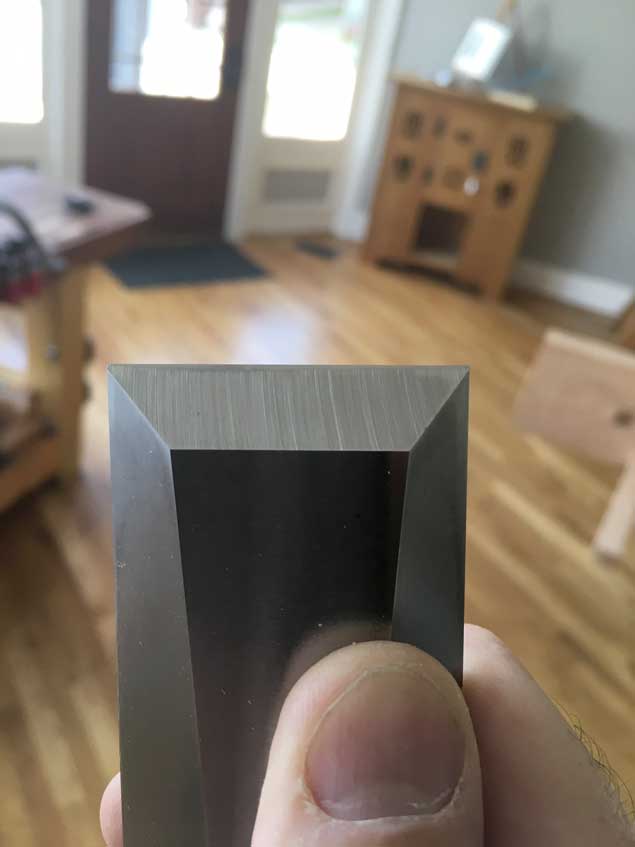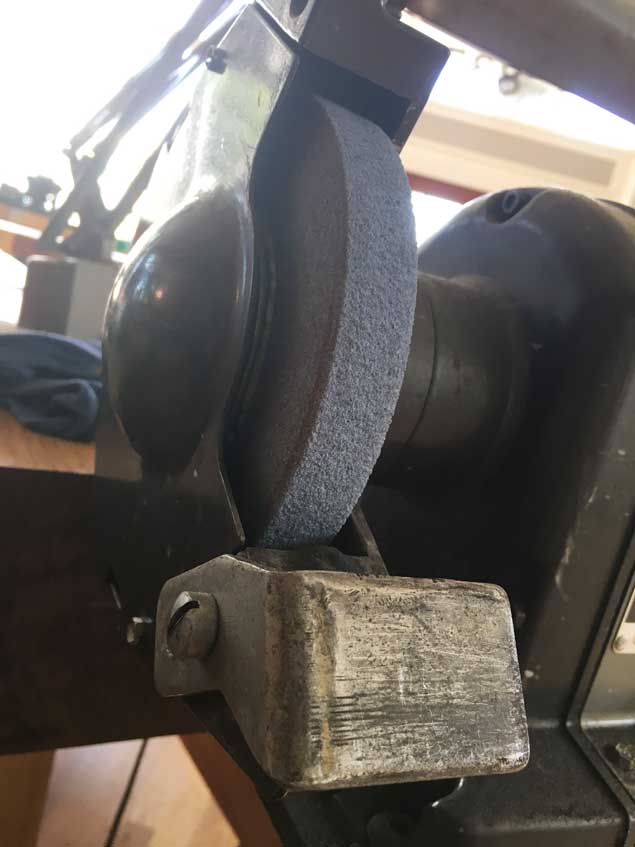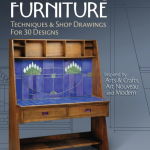We may receive a commission when you use our affiliate links. However, this does not impact our recommendations.
 I’m always surprised by how many woodworkers – even experienced ones – try to avoid the grinder.
I’m always surprised by how many woodworkers – even experienced ones – try to avoid the grinder.
They will purchase expensive diamond plates or (worse perhaps) a ream of belt sander paper and an expensive granite plate all to avoid stepping up to an electric or hand-cranked grinder.
This is not just a fear among hand-tool users who avoid electricity. I’ve met guys who will use an unguarded shaper with 1970s insert tooling who won’t go near a wee 6” electric grinder. It baffles me.
Instead of trying to explain why, however, I have only this to say: Get over it. Today.
The grinder has always been an essential piece of kit for woodworkers. The reason it is so important is that it fixes problems that honing and honing and honing create. If you’re a computer person, think of the grinder as the way you unplug an electronic thing to make it reset itself.
Honing – the part of the sharpening where you create a polished and fine edge – changes the geometry of the edge a bit every time you do it. After repeated honings, the geometry can get wonky at the micro level. Stuff you cannot see. Grinding fixes that.
Grinding fixes a chipped edge. Sometimes the chipping is difficult or impossible to see (especially if your eyes are older). So you hone and experience the same problem. You hone again with the same results. Meanwhile, you are changing the geometry with every honing. Soon the tool becomes a frustrating mess.
Get thee to a grinder. Hit “reset” on the tool and your troubles will almost always go away.
 What Grinder to Buy
What Grinder to Buy
What sort of grinder could you get? Buy one you can afford and one where the arbor runs true. High speed? Low speed? Variable speed? Bah. Doesn’t matter. The high-speed (3,450 rpm) machines are the cheapest and most common. What about 6” vs. 8”? Doesn’t matter. I prefer the 6” machines because they are cheaper and more common.
What about the grinding wheels? It matters. A decent wheel cuts fast. I like the Norton 3X grinding wheels (#60 or #80 grit). For most woodworker who aren’t toolmakers or turners, a 6” wheel will last a decade. No need to invest in anything more exotic unless you take up turning. You’ll also need a tool to dress the wheel so it is slightly convex.
What about training? Buy a cheap $10 chisel at the home center and practice on that. Learn to set the tool rest. Learn how long you can grind before the tool gets too hot. Learn to grind square without a jig.
But most of all, when something goes wrong with a tool, don’t be afraid to grind it.
— Christopher Schwarz
Want more straight talk on sharpening? Check out my video “The Last Word on Sharpening” available through ShopWoodworking.com.
Here are some supplies and tools we find essential in our everyday work around the shop. We may receive a commission from sales referred by our links; however, we have carefully selected these products for their usefulness and quality.










I too had major qualms about grinding–blue tools are not your friend.
I bought a PC slow speed grinder a few years ago but still was reluctant to grind good tools. I read all about CBN wheels on the blog from TFWW. They did not have one to fit my grinder (5/8″ shaft). Amazon sells them and boy was I amazed after the first use. Little vibration and it cuts very fast and the steel stays cool.
Late to the party, but I happen to be your prime target. I am terrified of taking any unfamiliar tool to the grinder. Why? Because I am terrified of damaging a guiltless tool and inviting the wrath of the steel fairies.
I have no problem grinding turning tools, since I have a Wolverine, a little practice, and cheap (but not bad) tools.
But in the last year, I spent a lot of time, task procrastination, and frustration in absolutely destroying a Draw Sharp rehab kit on a nice & old drawknife that had an inconsistent bevel angle. That taught me (some) humility, and I will, with fear and trepanation, take it to the grinder when I finish the current project, having replaced the Draw Sharp abrasives.
Mmm… Chris puts flat non mechanical grinding against machinery and declares the machinery the winner. Suddenly there’s a rush to get grinders? Which one? Wet or dry? Which speed? Bla bla bla.
Everyone, if you don’t like the sparks, dust and noise – use flat surfaces and paper. If you don’t mind sparks, dust and noise – use your machine. The end result is the same. It really is.
I love Chris’s blogs, and pay a LOT of attention to his advice, but occasionally he forgets just how much power and influence he has.
If you’re anywhere near NYC, Joel ant Tools for Working Wood regularly teaches a free grinding class where you can bring in a chisel and tune it up on his grinder. Dressing the wheel makes a tremendous difference, and his method makes hand-sharpening at your stones or plates a breeze.
What about ‘horizontal’ grinders (i.e. grinders where the wheel is horizontal and the grinding is done on the side)?
I bought a Rikon slow speed grinder on sale at Woodcrafter a few weeks ago. Chris, thank you for the justification of that purchase! And thank you for the tip about slightly convex. I had not figured that out yet.
I have an old chisel that I am working on, but the back is not flat. I have been working on that long enough that my fingers are cramped. Any suggestions on how to flatten the back of a chisel quickly?
Helpful article. I bought an after market work surface. It has a larger easily adjustable work surface.The grinder removes metal rapidly and I need all the the help and steadiness I can get..
Ditto! I have a Delta machine that includes the large wet wheel for honing and I hardly use that part. I do use the grinding wheel and have made jigs to make it easier for getting a predictable camber on plane irons and another one for square-to grinding on chisels and the like. I mounted the machine on a chunk of cab ply edged with oak and added rubber feet. On that base I have marks for setting up for grind angles per the protrusion of the irons and chisels. Also, got tired of having to drag it off a shelf or pick it up from some place low so I drilled a couple of holes in the base plate and now I hang it on a wall. Easy-peasy! Fear not the grinder for the grinder is thy friend.
Got an old 4″ hand grinder with wonky wheel this fall that needs to be dressed but it did the job well enough to help with a badly sharpened rabbit plane.